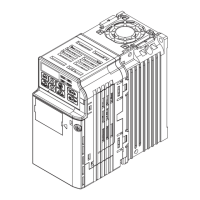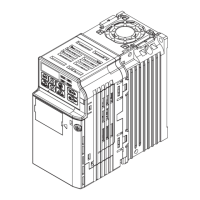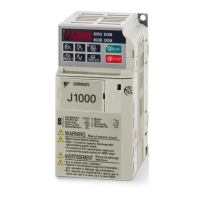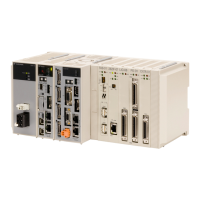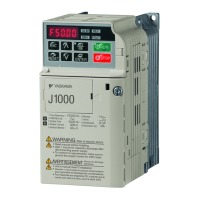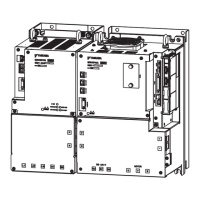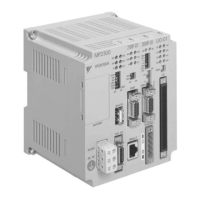5.5 E: Motor Parameters
E parameters cover V/f pattern and motor data settings.
u
E1: V/f Characteristics
n
E1-01: Input Voltage Setting
Set the input voltage parameter to the nominal voltage of the AC power supply. This parameter adjusts the levels of some
protective features of the drive (overvoltage, Stall Prevention, etc.).
NOTICE: Set parameter E1-01 to match the input voltage of the drive. Drive input voltage (not motor voltage) must be set in E1-01 for the
protective features of the drive to function properly. Failure to comply could result in improper drive operation.
No. Parameter Name Setting Range Default
E1-01
<1>
Input Voltage Setting 155 to 255 V 230 V
<1> The setting range and default value shown here are for 200 V class drives. Double this for 400 V class units.
E1-01 Related Values
The
input voltage setting determines the over-/undervoltage detection level and the operation levels of the braking transistor.
Voltage Setting Value of E1-01
(Approximate Values)
ov Detection Level BTR Operation Level Uv Detection Level
200 V Class all settings 410 V 394 V
190 V
(single-phase = 160 V)
400 V Class
setting ≥ 400 V
820 V 788 V 380 V
setting < 400 V 740 V 708 V 350 V
Note: The
braking transistor operation levels are valid for the drive internal braking transistor. If an external CDBR braking chopper is used, refer
to the instruction manual of that unit.
n
V/f Pattern Settings
The drive utilizes a set V/f pattern to determine the appropriate output voltage level for each relative to the frequency reference.
V/f Pattern Setup for V/f Control
1.
Set the input voltage for the drive. Refer to E1-01: Input Voltage Setting on page 193.
2.
Set the V/f pattern. Refer to V/f Pattern Settings E1-04 to E1-10 on page 193.
n
V/f Pattern Setting Examples
This section provides examples of how to set a V/f pattern using E1-04 to E1-10.
Table 5.10 V/f Pattern Examples
Example Specification Characteristic Application
A 50 Hz
Constant torque
For general purpose applications. Torque remains
constant regardless of changes to speed.
B 60 Hz (default setting)
C 60 Hz (with 50 Hz base)
D 72 Hz (with 60 Hz base)
E 50 Hz, Heavy Duty 2
Derated torque
For fans, pumps, and other applications that require
torque derating relative to the load.
F 50 Hz, Heavy Duty 1
G 50 Hz, Heavy Duty 1
H 50 Hz, Heavy Duty 2
I 50 Hz, mid starting torque
High starting torque
Select high starting torque when:
• Wiring
between the drive an motor exceeds 150 m
• A large amount of starting torque is required
• An AC reactor is installed
J 50 Hz, high starting torque
K 60 Hz, mid starting torque
L 60 Hz, high starting torque
M 90 Hz (with 60 Hz base)
Constant output
When operating at greater than 60 Hz the output
voltage will be constant.
N 120 Hz (with 60 Hz base)
O 180 Hz (with 60 Hz base)
The following tables show details on V/f patterns.
5.5 E: Motor Parameters
94
YASKAWA ELECTRIC SIEP C710606 31B YASKAWA AC Drive – J1000 Technical Manual
http://nicontrols.com
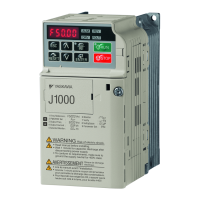
